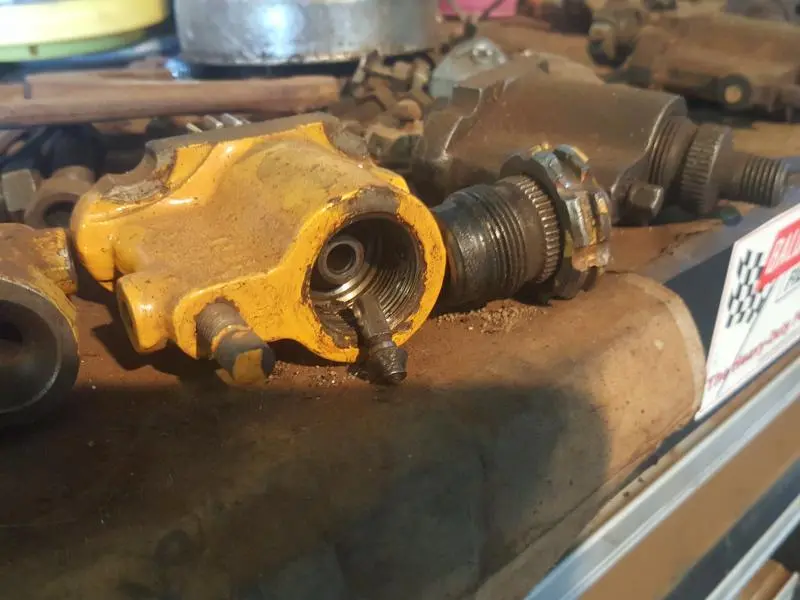If the plungers won't rotate, they are certainly stuck. I question whether it will be worthwhile to free them up since they are such a tight fit. Guess you won't know until you try. Once you get one off the housing you should get flow from the filter tower through the gallery to confirm fuel is even available.
Thanks guys. The plungers won’t move at all. When I pull the injector lines off there is fuel in the pumps so I think it’s getting fuel thru the gallery. I’m going to get a copy of the injector housing manual and try to take it apart and fix the issue.
Once you have the pumps out, use a heat gun, then immediately soak in diesel. Repeat as required. You might be able get the plungers out.
Yeah that's good advice Pete.
I recently helped a mate get a David Brown tractor running right. It was blowing lots of black smoke with a slight miss . It seems that previously an attempt to fee a stuck plunger was done by using a hammer and punch on the gear quadrant . While this appeared to fix the stuck plunger , the segment rotated on the plunger . This resulted in full fuel to that cylinder. Hence the black smoke . I just loosened of the clamp screw and rotated the plunger to where I thought it should be. Repeated this a couple of times until the engine seemed to run ok.
Got me thinking about that GP. A fellow could get a set of plungers out of a good running machine, and make up a jig and/or measure landmarks on the segment and the plunger scroll relative to each other, average them out, and then use that as a guide to getting the setting fairly close for the average pump assembly. I'd guess the pump calibrating shop might have set them up for volume per 1000 strokes at half-throttle or something which could be another way of doing it. I wonder if Bill Walter knows of the technique?
Got me thinking about that GP. A fellow could get a set of plungers out of a good running machine, and make up a jig and/or measure landmarks on the segment and the plunger scroll relative to each other, average them out, and then use that as a guide to getting the setting fairly close for the average pump assembly. I'd guess the pump calibrating shop might have set them up for volume per 1000 strokes at half-throttle or something which could be another way of doing it. I wonder if Bill Walter knows of the technique?
